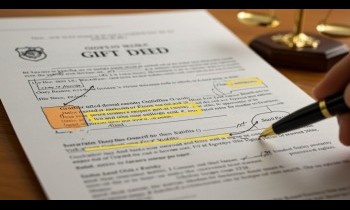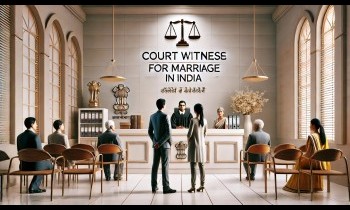Complete guide on Copyright

Date : 06 Jul, 2020
Post By Sparsh Goyal
When one spends a reasonable amount of time and effort in creating something, one should be made aware of the intellectual property protection that one could avail. Copyright is one such right that is available to the creator of an original literary, dramatic, artistic, or musical work. Such right becomes vested in the creator as soon as the work is designed. Copyright registration makes sure that an author or creator of a work can claim copyright over items ranging from software programmes to movies, and even performances at times. Copyright is an essential tool that protects your intellectual property. It ensures definite minimum safeguards of the rights of authors over their creations, thereby protecting and rewarding creativity. Creativity being the keystone of progress, no civilized society can risk ignoring the basic requirement of encouraging the same. Economic and social development of society rests on creativity. The protection given by copyright to the efforts of writers, artists, designers, dramatists, musicians, architects and producers of sound recordings, cinematograph films and computer software, creates an atmosphere conducive to creativity, which inspires them to create more and motivates others to create. Digital Millennium Copyright Act Digital Millennium Copyright Act (DMCA) is a rather controversial law by US government enacted in 1998 by then-president Bill Clinton. DMCA aims to balance the interests of copyright owners and users and look into any sort of copyright infringement that surface in the digital world. DMCA is intended to manage digital media and deal with copyright challenges the digital world faces. DMCA not only take care of the copyright infringement issues faced by users on the internet but also reinforces penalties for offenders. What is Copyright? Copyright is a right given by the constitution to creators of literary, dramatic, musical and artistic works and producers of cinematograph films and sound recordings. It is a group of rights including, inter alia, rights of reproduction, communication to the public, adaptation and translation of the work. There could be slight variations in the structure of the rights depending on the work. Copyright law protects the spirit of ideas rather than the ideas themselves. Under section 13 of the Copyright Act 1957, copyright protection is applied on literary works, dramatic works, musical works, artistic works, cinematograph films and sound recording. For example, books, computer programmes are protected under the Act as literary works. Indian copyright law is at parity with the international standards as contained in Trade-Related Aspects of Intellectual Property Rights (TRIPS). The (Indian) Copyright Act, 1957, under the amendments in 1999, 2002 and 2012, fully exhibits the Berne Convention for Protection of Literary and Artistic Works, 1886 and the Universal Copyrights Convention, in which India is one of the parties. India is also a part of the Geneva Convention for the Protection of Rights of Producers of Phonograms and is an active member of the World Intellectual Property Organization (WIPO) and United Nations Educational, Scientific and Cultural Organization (UNESCO). A website is a combination of various copyrightable works like design, graphic art, logo, program, and content, etc. In India, the Copyright Office does not offer any comprehensive website registration service and everything on the website will be required to be registered separately and hence would require separate applications. This means that you cannot have blanket copyright over the entire website. Instead, you own copyright only over the individual materials of the website. What is Public Domain? There are four common ways that materials arrive in the public domain: the copyright has expired. the copyright holder failed to follow copyright renewal rules. the copyright holder deliberately places it in the public domain. Copyright Registration Copyrights are safeguarded by “THE COPYRIGHT ACT, 1957” though there have several amendments to the act. It is not compulsory to get copyright protection but always advisable to do so because it will give the owner a certain set of minimum rights over his work and the protection that no one will be able to reproduce his work for a minimum period. The register of the Registrar of Copyrights is categorized into 6 categories: Literary works other than computer Programmes Musical Works Artistic Works Cinematography Films Sound Recording Computer Programs, tables & Compilations Procedure to follow An application in the format of FORM IV has to have to be sent to the registrar along with the requisite fees (mentioned in Schedule 2 of the act.). A separate application has to be filed for separate works Every application has to be signed by the applicant as well as an Advocate in whose favour a POA has been executed The registrar will issue a Dairy No. and then there is a mandatory waiting time for a period of 30 days for any objections to be received If there are no objections received within 30 days, the scrutinizer will inspect the application for any discrepancy and if no discrepancy is there, the registration will be done and an extract will be forwarded to the registrar for the entry in the Register of Copyright. If any objection is received, the examiner will mail a letter to both the parties about the objections and will give them both a hearing. After the hearing, if the objections are settled the scrutineer will scrutinize the application and approve or reject the application as the case may be. Advantages of registration Proof of ownership Filing a copyright infringement suit Right to assign Right to claim statutory damages Copyright Infringement The term “Infringement” is most frequently used about the invasion of rights secured by Copyrights, Patents and Trademarks. The unauthorized manufacture, sale, or distribution of an item secured by copyright, patent, or trademark constitutes an infringement. Copyright infringement is the use or production of copyright-protected material without the permission of the copyright owner. Copyright infringement means that the rights given to the copyright holder, such as the exclusive use of a work for a specified period, are being breached by a third party. Music and movies are two of the most well-known forms of entertainment that witness a significant amount of copyright infringement. Infringement cases may lead to contingent liabilities, which are amounts set aside in case of a possible lawsuit. While copyright does not safeguard information or ideas per se, it does protect the original expression of information and ideas. Copyright includes only literary, dramatic, musical and artistic works. The rights applied in each of these categories vary. Copyright doesn’t safeguard against independent creation of similar work. Legal actions against infringement are complex by the fact that many different copyrights may exist for some works – particularly for films, broadcasts and multimedia products. According to the rule, copyright lasts for 60 years. In the case of original literary, dramatic, musical and artistic work, the 60-year period is counted from the year following the death of the author. In the case of cinematograph films, sound recordings, photographs, posthumous publications, anonymous and pseudonymous publications, work of government and work of international organizations, the 60-year period is counted from the date of publication. How can Lawtendo help? LawTendo has around 15000+ lawyers across India in our platform. LawTendo strives to facilitate cost-efficient and quality legal service to our clients. You can contact us at +91-9671633666 or [email protected].
The term “public domain” refers to creative works that are not protected by intellectual property laws such as copyright, trademark, or patent laws. The public possesses these works, not an individual author or artist. Anyone can use a public domain work without acquiring permission, but no one can ever own it. An important part to understand about public domain material is that, while each work belongs to the public, collections of public domain works may be protected by copyright. Collections of public domain material will be safeguarded if the person who created it has used creativity in the choices and organization of the public domain material.





